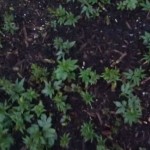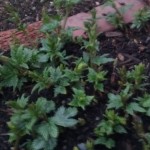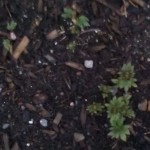The end of winter to us is when the homegrown hops start to shoot out of the ground. The Magnum hop plant is my most mature one. It is entering its fourth year of growth.
Last year, they started to shoot through the ground on March 1st. This year, an early April is more ordinary and more welcome. Now I have to figure out how I am going to cut back on some of these shoots.
My 2012 experiment to leave them alone didn’t produce as many hop cones as the previous years. I will be cutting back this year – just don’t know which ones.
My Cascade hop bines are starting to sprout too. They are in their second year of growth and I am hoping to get some cones out of them this year.
They look healthy so far – not as robust as the Magnum plant but strong for year two. I wish I could say the same for the Willamette hop plant. I don’t see anything from its plot yet.
I love growing hops and I love brewing with the cones at harvest time. I know great number of brewers will tell you about the unpredictability of homegrown hops in terms of alpha acids and you can’t expect to brew excellent beers with them.
I can type this fact with all the honesty I can muster: two of the beers I have brewed with homegrown hops have placed in competition. Were they hop focused styles? No. One was a blonde and one was an alt but they both tasted fantastic. If you know how to use your homegrown hops based on what the style calls for and where the hops are needed in the boil, you should have no problems brewing great beers with hops you grow in your backyard.





reuben
Advice on starting a new homegrown crop? I have a friend who is gifting me a cutting of their mature (age unknown) cascade plant.
THANKS!
John
Hi rueben,
Plant it somewhere that gets a lot of sun. 6 to 8 hours a day is good. Use good soil. I dug a hole and replace the dirt with soil I bought at the store. Water it often. I got into a habit of watering the plant most days before I went to work. There are some other resources online to get some tips from…but sun, soil, and plenty of water have led to my success.
Brian
Watering daily is probably not a good idea. I live in Utah, which is basically a desert, and I water new bines twice a week and established bines once a week. They actually benefit from having the soil dry out a bit.
John
Thanks Brian.
Plenty of water has worked for me. If your bines seem to be suffering from too much water, don’t water them as much. In my experience, when they got too dry, they didn’t do as well.